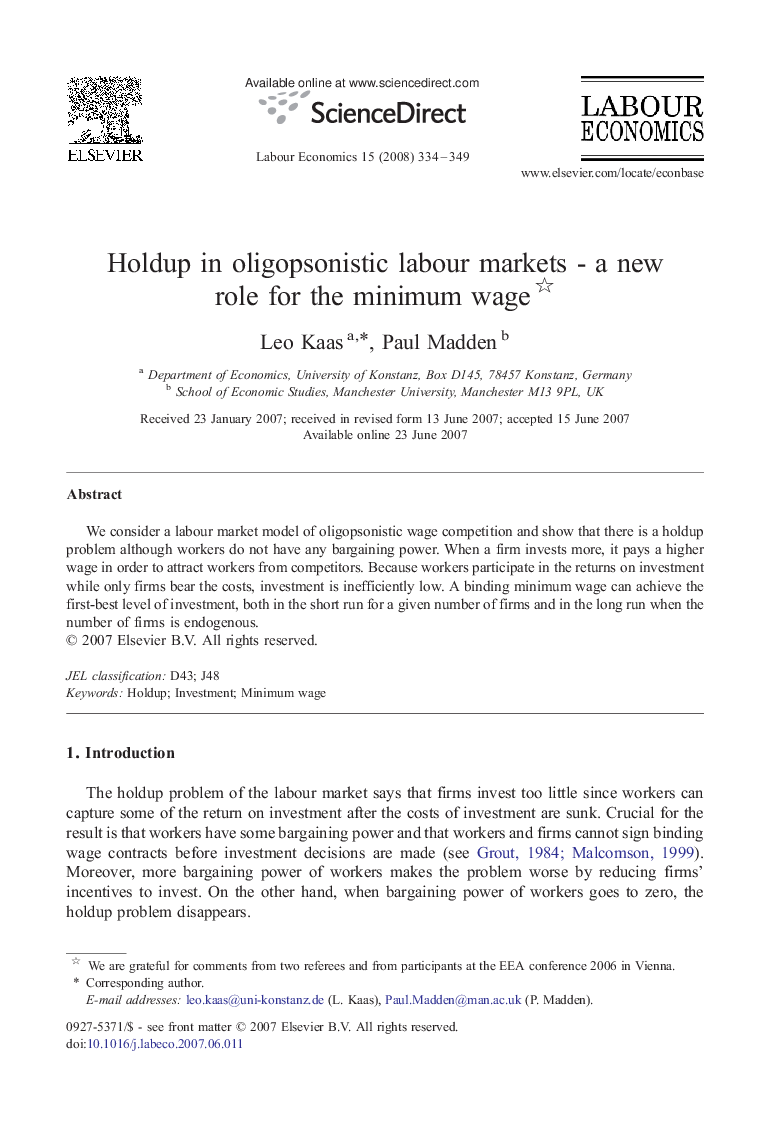| Article ID | Journal | Published Year | Pages | File Type |
|---|---|---|---|---|
| 972909 | Labour Economics | 2008 | 16 Pages |
Abstract
We consider a labour market model of oligopsonistic wage competition and show that there is a holdup problem although workers do not have any bargaining power. When a firm invests more, it pays a higher wage in order to attract workers from competitors. Because workers participate in the returns on investment while only firms bear the costs, investment is inefficiently low. A binding minimum wage can achieve the first-best level of investment, both in the short run for a given number of firms and in the long run when the number of firms is endogenous.
Keywords
Related Topics
Social Sciences and Humanities
Economics, Econometrics and Finance
Economics and Econometrics
Authors
Leo Kaas, Paul Madden,
